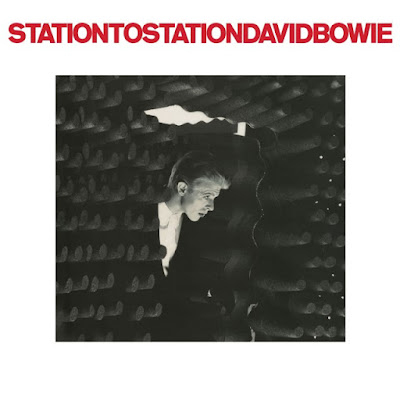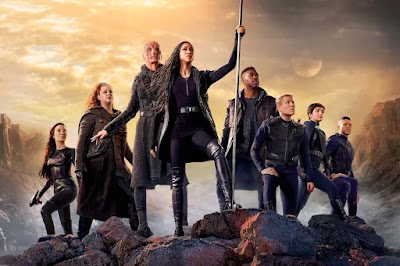SPOILERS AHEAD FOR ALL OF SEASON THREE
Star Trek Discovery has wrapped up its third season and, while it was not without faults, it was also not without merit and I think the latter outweighs anything that could have otherwise dragged it down. Overall, there is one thing which has, since the very beginning, kept this series afloat and that is undoubtedly its cast and the characters they’ve created. Indeed, the most frustrating thing about the show is how we always want to know more about the peripheral characters because someone in this production has managed to stuff this ship with people and creatures we want to get to know much, much more.
Season three did a lot to flesh out some of those secondary characters while it continued to focus on the principal cast to mostly rewarding ends. We got more screen time with people like Detmer (Emily Coutts) and Owosekun (Oyin Oladejo) with the former providing some great moments as she dealt with her PTSD post time-jump, something I was so relieved to see was actually trauma and not some invasive AI sub-plot as was theorized by some fans. We got a lot of new characters as well who mostly managed to make positive contributions. Among those were the gender-fluid duo of Adira (Blu del Barrio) and their non-corporeal partner, Gray (Ian Alexander), plus Starfleet Admiral Vance (Oded Fehr), who all managed to step into their roles with confidence and a sense of defined identity which helped make them empathetic and appealing additions to the show. We had a surprisingly effective romantic lead in the form of Cleveland Booker (David Ajala), who also brought in a fancy cat for company! There was even the surprise recurring appearances by acclaimed director David Cronenberg as the mysterious Kovich, who rivalled the casting of Werner Herzog in The Mandalorian for coolness credibility. Apparently shooting in Toronto has its benefits!
The weakest links in terms of new faces, however, were to be found in the ranks of the “villains”, which is where the season had its biggest struggles. Characters like Osyraa (Janet Kidder) and especially Zareh (Jake Weber), were no more than gangsters lacking any intrigue in terms of motivation beyond the typical lusting for wealth and power. Criminal syndicates are simply boring as far as science fiction is concerned. It’s too mundane and real world to be of interest. What Trek fans want for adversaries is not simplistic “good vs evil” conflicts.
What made something like the Borg an interesting adversary is that they represented a truly alien society and value system which was inherently incompatible with the kind of humanistic free society idealized by the Federation and Starfleet. Their conflict wasn’t based on one wanting to do “good’ while the other wanted “evil”. It was based on the concept that their very definitions of those terms were fundamentally different. In other past classic Trek cases, conflicts arose from misunderstandings and ignorance and problems were resolved through the exposure of ideas and information which changed the way the players saw the game. These are the kinds of conflicts Star Trek has always done best. Characters like Osyraa and Zarah don’t represent anything that inspires analysis or reconsideration. They have no depth and no redeeming qualities. When they meet their demise, it inspires no more reaction than “good riddance”. There’s no regret that we couldn’t have worked it out with them. There’s no sadness in that their situation had any tragic irony. They’re just assholes we’re happy to see the end of. And they weren’t even particularly challenging or intimidating assholes at that.
As for the main cast, we had a lot of wonderful moments happening with them. Saru (Doug Jones) went through an empowering arc where he explored his role as captain. Tilly (Mary Wiseman) got to develop some real depth beyond her giddy awkwardness and grow into someone with emotional depth and confidence. Stamets (Anthony Rapp) & Culber (Wilson Cruz) got to nourish the rekindled spark of their romance by growing their family through the informal adoption of Adira & Gray. This relationship had some of the most moving interactions of the season, especially Stamets’ trauma and sense of betrayal with Burnham as she refused to allow him to rescue his family in the penultimate episode. This was something that left a scar that I’m sure we’ll see impacting their interactions in the next season of the series.
Even the weakest of the main cast, Michael (Sonequa Martin-Green), got to develop a much needed sense of humanity. It’s always been clear to me that this entire series has been built around the journey of Michael towards the captain’s chair of the Discovery. But her character has been problematic in some ways as she’s been an easy target for the incel crowd to throw accusations of her being a “Mary Sue”. While watching the third season, I also took the time to give the first two seasons another viewing and you sure notice how stiff and humorless Michael is at the beginning. Season three sees her develop a new lightness and emotional freedom that is a huge improvement for the character, even as she continues to exhibit the same kind of misguided rashness that got her into trouble way back at the beginning of this journey. In the end, they’ve tried to sell this as her defining asset that’s going to be here distinguishing feature as a captain, but I do still feel a bit unconvinced by that assessment.
But the biggest star of this season’s cast has to be Michelle Yeoh as Emperor Philippa Georgiou. She managed to stand out in a big way which is going to do a lot to help set her up for her eventual return in the planned Section 31 series. Her character underwent a sweeping transition from brutal tyrant to somewhat less brutal mother figure for Michael. Her story came to an amazing climax with a surprise return to the Mirror universe (and a delightful callback of TOS’ Guardian of Forever) where we got to see the entire cast playing their true Mirror selves as opposed to pretending to be those characters as we saw in season one. Having Georgiou be the only one in that story to understand the existence of an alternate reality and know the truth about the potential it presented pushed her character into some fascinating interactions. Now, this was not without its moral issues. There is some uncomfortable ground to cover when it comes to this “Emperor”. It’s a bit like asking an audience to accept that Hitler could be turned into a nice guy if he’d been given a chance to serve with some good people. It’s a tough stretch to make that leap, but you can’t deny the appeal and charisma of Yeoh, who pushes aside such sticky questions with a sweep of her hair and a high kick or two.
In terms of the story telling, the show has made a shift away from the serialized, season long story arcs that dominated the first two seasons of the show. They managed to find a somewhat stable footing by balancing self-contained, episodic stories alongside the seasonal arcs, though I must say that the smaller stories were often much better than the main threads that held them together. As mentioned previously with my issues regarding the seasons main antagonists, the Emerald Chain, the whole idea of a criminal syndicate is pretty tedious conceptually and not at all engaging for an audience looking for strange new worlds and alien lifeforms. They are, in the end, no more than grubby thugs lacking any likability and their story was not at all “fascinating”, to borrow a term from an old Vulcan friend. The mystery of the “burn” was somewhat more interesting in that it turned out NOT to be the result of some invading force or anyone with any nefarious intentions. There were a lot of theories floating around about it, including that Starfleet or the Federation were somehow responsible, and I was relieved that none of them came to pass and the reality of it was something actually entirely unexpected. There were a lot of people expecting the Federation to turn out to have some sort of corrupt motives throughout the season, but none of that came to pass, which was a relief for me as that would have been far too cynical for this show and its sense of purpose.
As for the smaller episodic stories, there was a lot of touching base with the past in order to get a footing in this new time. The jump of 900 years into the future is something I’ve been begging for from Trek ever since Voyager ended. I’ve been desperate for the franchise to take a leap forward instead of backwards. I was rather disappointed when Enterprise turned out to be a prequel and then this trend continued through to the JJ movie reboots and the first two seasons of DISCO. When they announced they’d slingshot the ship into the far future, I was thrilled at the prospect of getting into uncharted territory and the potential to see some really wild hyper-futuristic tech and cultures. The series did deliver on some of that with the new toys and tools that gave the show a fresh look, though with perhaps a tad too much lens flair. However, in one regard, the regular revisiting of older places and people was a little big of a letdown, but then there was also a lot of great story lines that come from those trips that paid off in terms of character development and world building. After all, we do need to get a sense of context here and I think that was mostly accomplished throughout the season. Seeing where planets like Earth, Vulcan and Trill are now gave us some understanding of where things have gone in these centuries.
Season four is looking like it’s set up to offer a greater focus on episodic stories as Discovery enters into a role of emissary to reconnect with long lost Federation members as they deliver fresh dilithium supplies. I only hope we end up meeting some new faces and races along the way. We are well overdue for some “strange new worlds and civilizations” rather than the same-old-same-old. The new series based on Captain Pike’s era on the Enterprise looks set to offer some of that and I hope DISCO does too.
Having Star Trek back on the TV screen these past 4 years has been a real treat for an old Trekker like me who’s been following the franchise since it began when I was 3 years old. There’s a lot of sentimental attachment here and I’ve been satisfied with most of it through its various incarnations. Some things have landed better than others and some were downright unappealing, but Discovery has been something I’ve been onboard with since its debut episode, even when it was struggling to find its identity. I think it’s been working towards realizing its potential all along the way, however, and I think its trajectory remains, for the most part, on target. There’s always going to be some things that don’t work as well as others, but I think they’re trying and there are some really dedicated, sincere people involved in these shows and the proof is in the pudding (or maybe the hasperat).






